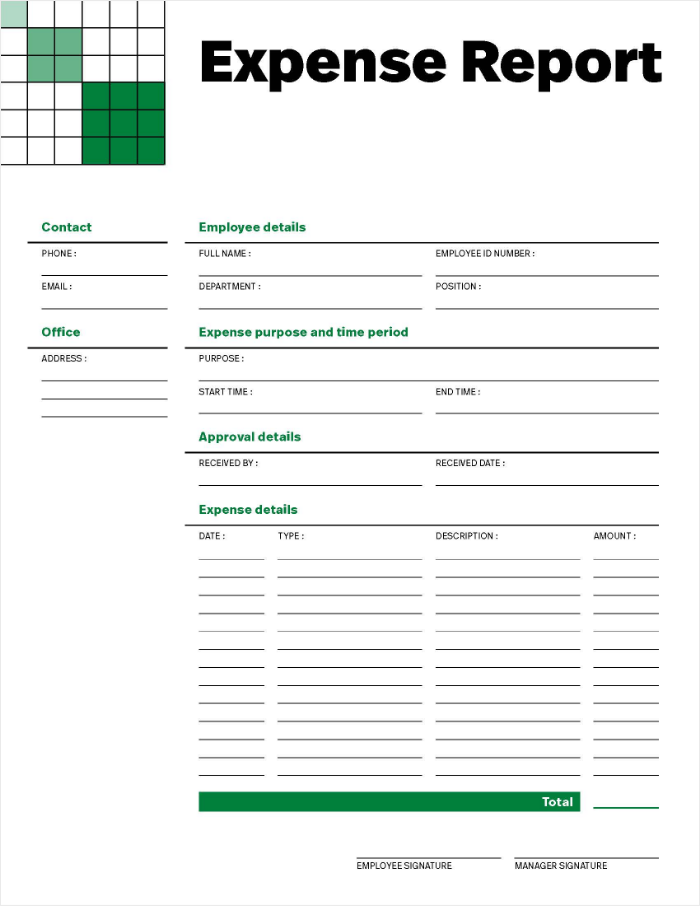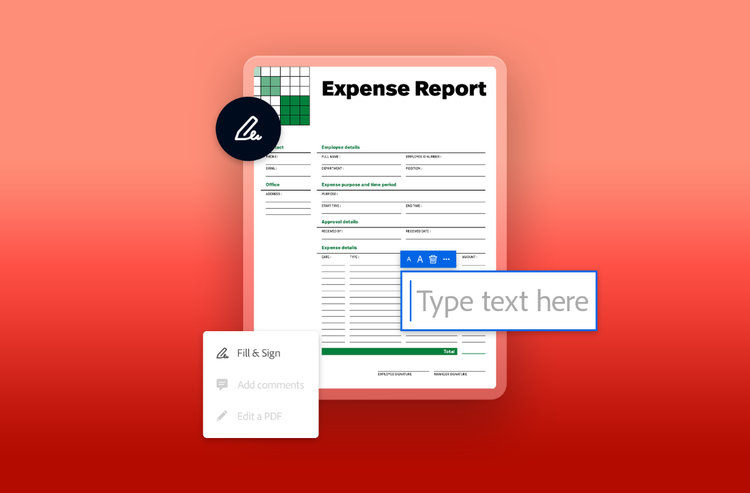ACROBAT
Free downloadable expense report template and how to use it.
Download our expense report template and use these customization tips.
ACROBAT
Download our expense report template and use these customization tips.

Expense reports can serve two different purposes. They allow a business to keep track of costs and create an accurate picture of profit versus revenue, and they also allow employees to get reimbursed for expenses they’ve incurred on behalf of their employer.
While expense reports may seem tedious, the details they include are important for your company’s accounting:
When seeking reimbursement, employees are usually responsible for producing an expense report. If you work for a small business, you may be expected to submit an expense report with little instruction on what it should look like. You can follow the guidelines below to ensure your expense report is effective and professional.
As a business, however, providing workers with an expense report template is more efficient. Workers can then complete and submit a consistent report each time they’re reimbursed. Providing a template is more orderly and can make things much easier for those that process expense reports and track costs. A template can also guide employees and ensure they list charges correctly.
You might be wondering, “How do I create an expense template?” You can start by downloading the template below and customizing it to your needs.

An expense tracker template gives your business a regular and organized way to track expenses and gives employees a simple way to submit professional and effective expense reports that include all of the necessary details.
Adobe’s free online tools can help. Start by following these five steps:

As a business, you’ll use expense reports to balance the books and understand the true profit of your company. You can use expense reports to help your company with accounting and answer to investors. Including documentation on expense reports may feel tedious, but it will be especially important for your business during tax season.
If you’re an employee, expense reports help you get reimbursement for the money you’ve spent on behalf of the business you work for. They require some detail from you to keep you accountable, help your company with accounting, and even to prepare your company for potential audits.
There are many types of expense reports that you need for different occasions. As a business, you should have monthly expense reports to keep up with the overall costs of your business from month to month. Long-term reports can help you get a bigger picture of where your money is going. Some expenses are routine (like rent for an office), and these expenses are accounted for in recurring expense reports. If you’re a larger business, you’ll also have department-specific expense reports.
As an employee, you might turn in a report monthly, in which case, you’d use a monthly expenses template. If you’re not regularly submitting expense reports, it’s possible that you need them for the occasional business trip or client dinner. Perhaps your expense reports reimburse your mileage in a personal vehicle. You can always edit and customize your expense report template to fit all or any of these needs.
Adobe Acrobat can help you create neat templates for all of your expense reports and keep them in a secure PDF format. Use Acrobat to fill out and sign reports and keep your accounting simple.